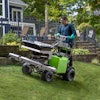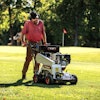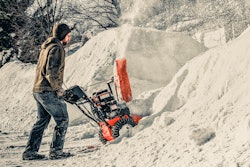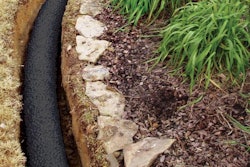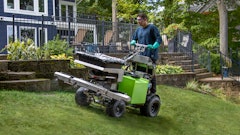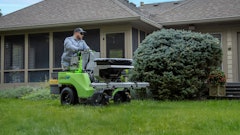
As the days get shorter and the weather turns cold, it's time to start preparing your equipment to be stored for the winter. If the right steps aren't taken, your expensive tools and machinery can be damaged and sometimes even ruined during the long months of inactivity.
Here are some tips to help you avoid unnecessary damage to your equipment and ensure it's ready to go and easy to access when spring comes back around:
Find the Right Storage Spot
Finding the right place to store your equipment is probably the best thing you can do to protect it.
Ideally, you should store lawn equipment indoors or sheltered from the elements. Garages are usually the sturdiest and most protected places to store equipment, but a shed or separate storage container can work too. A good tarp can also work in a pinch but is not recommended as it's easy for the elements to still affect your equipment. The main goal in choosing a good storage spot is to keep water from rusting your equipment through a repetitive cycle of freezing and thawing.
Blade Maintenance
If you have any high-quality trimmers, pruners, or other bladed lawn equipment, you should be sure to clean and grease the blades and store them properly at year's end. Cleaning blades will remove residual sap or bio matter leftover from yard work, which is important as any residue that freezes onto the blades will be difficult to remove in the spring.
Oiling your blades will help protect them from rust. Even water-tight storage can see fluctuations in humidity over several months, so the added moisture protection will help extend the life and quality of your blades. Linseed oil is a good universal oil for blades, but check the manufacturer's recommendation to see if there is a specific type of oil or grease that should be used on your equipment.
Once your blades are properly cleaned and oiled, be sure to sheath them or wrap them in wax-sided cloth to preserve the oil and further prevent rust.
Small Engine Maintenance
You should never store any equipment with untreated gasoline inside. This is because ethanol-based gasoline goes bad quickly, and when it does, it can damage the inner workings of your equipment.
Occasionally, tools can be stored without draining the gasoline if a stabilizer is added. Stabilizers slow the degradation of fuel but are generally only effective for 30 to 90 days. If your winters are short and you think you will use your equipment again soon, a stabilizer might be a good idea.
Depending on where you live, though, winter can sometimes last longer than two or three months. If this is the case, or if you're not sure how long your equipment will be in storage, it's probably best to play it safe and drain your gasoline. Follow the owner's manual for your equipment and be sure to wipe down and clean everything before putting it into storage.
Organization
Once you've picked a good place to store your lawn equipment and have everything cleaned, prepped, and ready to be put away, it's time to figure out the best way to organize your tools.
Start by considering the likely timeline of use. If you generally use your trimmers before you need to cut your lawn, you should store them closer to the front of your garage or storage shed. This way, you're not clambering over equipment you won't need for a few weeks to get to the tools you need now.
You should also elevate as many things as possible. Shelves, peg boards, and ceiling hooks and racks are relatively easy to find and install and will keep your equipment off the floor. This will maximize the space you have to work with and will prevent heavier equipment from leaning on and potentially damaging smaller or more delicate tools.

